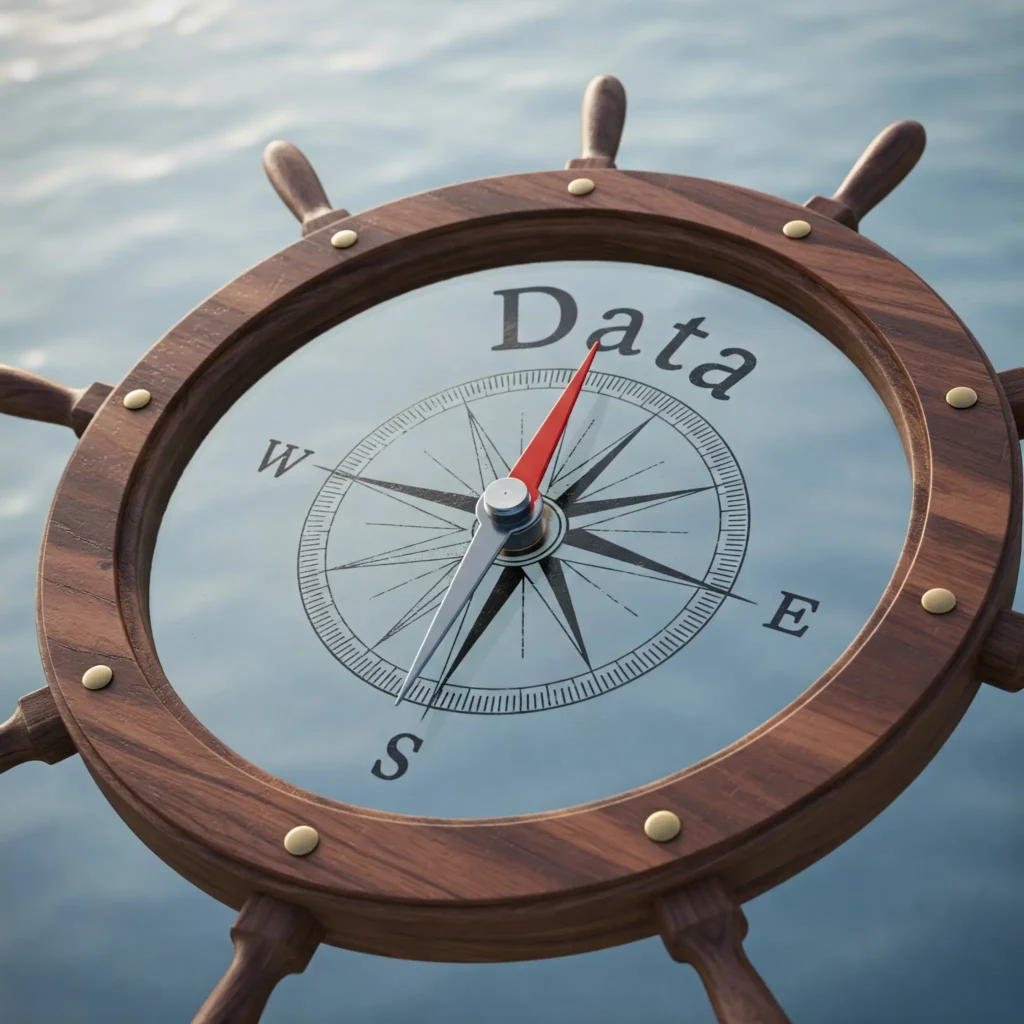Imagine you’re a treasure hunter, navigating the vast seas of data in search of valuable insights. In today’s digital age, artificial intelligence (AI) has become the compass guiding you through turbulent waters, transforming the landscape of data analytics. Let’s explore five pivotal ways AI is reshaping this domain and discover what artificial intelligence can do to enhance your data-driven journey.
The Data Revolution Is Here
Sifting through endless data without AI is like searching for a single grain of sand on a beach. That’s what analyzing massive amounts of data can feel like without the right tools. But here’s the good news – artificial intelligence is changing the game completely! At MN Service Providers, we’re passionate about helping businesses harness the power of technology, and today we’re diving into what artificial intelligence can do to revolutionize your data analytics.
Think about it – every click, purchase, and interaction online creates data. By 2025, experts project the global data analytics market to reach a whopping $140 billion! That’s a mountain of information that could either overwhelm your business or become your greatest asset. The difference? Understanding what artificial intelligence can do to transform that data into gold.
1. Automating Data Processing: The Tireless Sailor

Sifting through massive datasets manually is akin to bailing water from a leaky ship with a teaspoon—it’s labor-intensive and time-consuming. AI acts as a tireless sailor, automating routine tasks such as data cleaning, integration, and preprocessing. This automation accelerates the journey from raw data to actionable insights, allowing you to focus on strategic decision-making rather than getting bogged down by mundane chores.
“I used to spend my Fridays buried in reports,” says one of our clients. “Now AI handles the number-crunching, and I can focus on what those numbers actually mean for our business.”
According to Forbes, AI-powered analytics tools enable data scientists to automate routine tasks, freeing up valuable time for more complex analysis. AI systems can process thousands of data points in seconds, handling tasks that would take humans hours or even days. It’s like having a super-powered assistant who never needs coffee breaks!
2. Enhancing Predictive Analytics: The Crystal Ball

Predicting future trends without AI is like trying to forecast the weather by gazing at the horizon—often inaccurate and unreliable. AI serves as a crystal ball, employing advanced algorithms to analyze historical data and identify patterns, enabling more accurate forecasts of future outcomes.
What if you could anticipate your customers’ needs before they even realize them? AI analyzes historical data to forecast trends, helping you stay ahead of the curve. According to recent studies, businesses using AI-driven predictive analytics are achieving 32% higher profitability than their competitors.
For instance, in the financial sector, AI models scrutinize past market data and economic indicators to predict stock prices and investment risks, aiding investors in making informed decisions. A retail company might use AI to predict which products will be popular next season based on current buying patterns, social media trends, and even weather forecasts. Talk about being ahead of the game!
3. Real-Time Data Analysis: The Agile Navigator

In the fast-paced currents of today’s markets, real-time data analysis is crucial. AI acts as an agile navigator, swiftly processing streaming data to provide immediate insights. This capability is invaluable across various industries.
For example, retailers are increasingly integrating weather analytics into their strategies to mitigate the unpredictable effects of weather on shopping behaviors. Walmart’s AI-driven inventory management used weather forecasts to adjust product prices, demonstrating the power of real-time data analysis in responding to environmental factors.
4. Uncovering Hidden Patterns: The Insightful Mapper

Discovering subtle correlations in complex datasets without AI is like exploring uncharted territories without a map. AI serves as an insightful mapper, utilizing machine learning techniques to reveal hidden patterns and relationships that might elude traditional analysis. This deeper understanding empowers organizations to develop innovative strategies and solutions.
Sometimes the most valuable insights are hiding where you’d least expect them. AI can spot connections between seemingly unrelated data points – connections you might never discover on your own. Maybe your ice cream sales spike not just when it’s hot, but specifically when it rains the day before a hot day. Would you have noticed that pattern manually? Probably not!
For instance, researchers at the Oxford Drug Discovery Institute are utilizing AI-powered databases to expedite Alzheimer’s drug discovery by filtering extensive biomedical data more efficiently, significantly speeding up their research process.
5. Democratizing Data Access: The Tailored Approach

Not everyone in your company is a data scientist, but everyone can benefit from data insights. What artificial intelligence can do for data accessibility is remarkable.
Modern AI tools are increasingly user-friendly, with natural language processing that lets you ask questions in plain English and get clear, visual answers. Instead of “Run a correlation analysis on variables X and Y,” you can simply ask, “Do customers who buy product A also tend to buy product B?”
This means everyone from marketing to sales to customer service can make data-informed decisions without needing specialized technical knowledge.
The Future Is Bright (And Smart!)
As AI technology continues to evolve, what artificial intelligence can do for data analytics will only become more impressive. We’re moving from systems that simply analyze what happened to those that can anticipate what will happen and even recommend what should happen.
At MN Service Providers (MNSP), we specialize in integrating AI solutions to help businesses harness the full potential of their data. Whether you’re looking to automate processes, enhance predictive capabilities, or personalize customer experiences, our team is here to guide you through the AI transformation.
Remember, in today’s digital landscape, data isn’t just an asset – it’s your competitive edge. And what artificial intelligence can do is sharpen that edge to help you cut through the noise and achieve remarkable results.
Final Thoughts
The question isn’t whether you should incorporate AI into your data analytics strategy – it’s how quickly you can do it. As the saying goes, “The best time to plant a tree was 20 years ago. The second best time is now.” The same applies to embracing what artificial intelligence can do for your business.
Stay ahead of the competition—don’t let them race past you while you’re standing still. Reach out to MN Service Providers today, and let’s start transforming your data into your most valuable business asset!
Frequently Asked Questions (FAQ)
AI is used in data analytics to automate data processing, detect patterns, make predictions, and generate insights, improving decision-making and efficiency.
AI can be used for automation, data analysis, natural language processing, image recognition, robotics, personalized recommendations, and many other applications across industries.
AI is used in real life for virtual assistants (e.g., Siri, Alexa), chatbots, recommendation systems (e.g., Netflix, Amazon), fraud detection, healthcare diagnostics, and self-driving cars.
John McCarthy is considered the father of AI for coining the term “artificial intelligence” and contributing significantly to its development.
AI is a tool that can be both good and bad—it enhances efficiency, automates tasks, and improves lives, but it also raises ethical concerns like job displacement and data privacy.
Google is not AI itself, but it uses AI in many of its services, such as search algorithms, Google Assistant, translation, and personalized recommendations.
Melvin C Varghese is an author with more than 8 years of expertise in DevOps, SEO and SEM. His portfolio blogs include a Digital Marketing blog at https://melvincv.com/blog/ and a DevOps blog at https://blog.melvincv.com/. He is married with 2 small kids and is a simple person who eats, sleeps, works and plays. He loves music, comedy movies and the occasional video game.